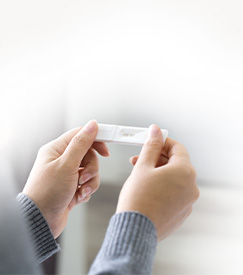
If you’re preparing for your adoption home study, you might feel overwhelmed by the process ahead. While the home study is indeed comprehensive—involving interviews, background checks, financial reviews, and more—this article focuses on the physical safety inspection portion of the home study. To help you prepare, we’ve created the ultimate room-by-room safety checklist below as a general guide to common safety considerations.
Keep in mind that specific requirements vary by state and agency, so consult with your home study provider about their particular safety standards and requirements.
Understanding the Home Study Process
Before diving into the checklist, remember that the home inspection is just one component of your complete home study. The entire process typically includes:
- Personal and couple interviews with your social worker
- Background checks and clearances
- Financial documentation review
- Health statements
- Reference letters from family and friends
- Discussion of your family relationships and dynamics
- Exploration of your parenting philosophy and plans
The physical inspection of your home typically takes only 1–2 hours of the weeks-long home study process. However, being well-prepared can help you feel more confident and demonstrate your readiness to provide a safe environment for a child.
Remember: Requirements Vary & Preparation Matters
Every state and agency has their own specific requirements for home safety. While this checklist provides general guidance, your home study provider will be your best resource for understanding exactly what’s required for your safety inspection. Some items on this list may not be necessary for your home study, while other safety measures not mentioned here might be required by your agency.
What matters most is showing that you’ve thoughtfully considered child safety and are prepared to create a secure environment for a child. Your social worker isn’t looking for a perfect home—they want to see that you understand the importance of child safety and are committed to maintaining appropriate safety standards.
During the inspection, don’t hesitate to ask questions or discuss your plans for additional safety measures once you know your child’s age and needs. This shows your commitment to creating a safe, nurturing environment for your future child.
Room-by-Room Safety Checklist
Note: This checklist serves as a general guide. Your home study provider will inform you of specific requirements for your situation. Some items may not be required, while additional safety measures might be needed based on your location and home study provider.
Overall Home Safety
Smoke Detectors
- Install on every level of your home
- Place in each bedroom
- Test all units
- Replace batteries if needed
- Document maintenance schedule
Carbon Monoxide Detectors
- Install on every level
- Test all units
- Replace batteries if needed
Fire Safety
- Install fire extinguishers on each floor
- Create and post emergency exit plan
- Ensure windows can be opened from inside
- Clear pathways to exits
General Safety
- Cover all electrical outlets
- Secure loose wires and cords
- Install safety gates at stairs (if applicable)
- Post emergency contact numbers
Kitchen
Cabinet Safety
- Install childproof locks on lower cabinets
- Secure cleaning supplies
- Lock up harmful substances
Appliance Safety
- Secure refrigerator doors
- Install stove knob covers
- Lock dishwasher
- Secure trash containers
General Kitchen Safety
- Store sharp objects out of reach
- Secure medications
- Post emergency numbers
- Stock first aid kit
Nursery/Child’s Room
Furniture Safety
- Anchor dressers and shelves to walls
- Install cordless window coverings
- Ensure sturdy changing table
- Research current crib safety standards
Window Safety
- Install window guards
- Secure blind cords
- Check window locks
Room Preparation
- Set up monitoring system
- Control room temperature
- Create safe storage solutions
- Ensure proper ventilation
Bathroom
Medicine Safety
- Install childproof locks on cabinets
- Secure medications
- Lock up cleaning supplies
General Bathroom Safety
- Place non-slip mats in/around tub
- Set water heater to 120°F or lower
- Install toilet locks
- Store hair appliances safely
Living Areas
Furniture Safety
- Secure bookcases to walls
- Cover sharp furniture corners
- Create clear pathways
- Secure TV and entertainment centers
General Living Area Safety
- Secure window treatments
- Cover outlets
- Lock display cabinets
- Create safe pet areas (if applicable)
Outdoor Areas
Yard Safety
- Secure gates and fences
- Clear hazardous items
- Store garden tools safely
- Maintain safe play areas
Pool Safety (if applicable)
- Install proper fencing
- Secure pool covers
- Install alarms
- Post pool rules
Basement/Garage
Storage Safety
- Lock up tools
- Secure hazardous materials
- Organize storage areas
- Clear emergency exits
General Safety
- Ensure proper ventilation
- Secure laundry supplies
- Lock storage areas
- Mark emergency exits
Additional Safety
Documentation
- Create emergency contact list
- Organize important documents
- Prepare emergency kit
- Document safety procedures
Vehicle Safety
- Research car seat requirements
- Prepare vehicle emergency kit
- Document vehicle maintenance
- Plan safe loading/unloading areas
Maintaining Safety Beyond the Home Study
While the initial home study is your primary safety inspection, maintaining a safe home environment remains important throughout your adoption journey. If additional visits from social workers are part of your process, or you simply want to ensure ongoing safety for your family, here’s a helpful checklist for ongoing safety maintenance:
Regular Safety Checks
- Test smoke and carbon monoxide detectors monthly
- Check fire extinguishers’ pressure gauges quarterly
- Inspect childproofing devices for wear and tear
- Update emergency contact information as needed
Age-Appropriate Updates
- Adjust safety measures as your child grows
- Add new childproofing for different developmental stages
- Modify room arrangements for changing needs
- Update emergency plans to include your child’s capabilities
Documentation
- Keep a maintenance log of safety checks
- Document any safety upgrades or modifications
- Save receipts for safety equipment purchases
- Update home safety photos periodically
Seasonal Safety
- Check heating/cooling systems before season changes
- Inspect outdoor play equipment regularly
- Assess winter/summer safety needs
- Update emergency kits with season-appropriate items
Next Steps
As you consider these safety suggestions, remember that the home inspection is just one part of your larger home study process. The best first step is to connect with your home study provider to understand their specific requirements and standards. They can guide you through exactly what they’ll be looking for during your home safety inspection.
Ready to learn more about adoption and the home study process? Complete our free adoption application today and we’ll be happy to help you get started!






